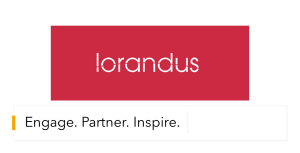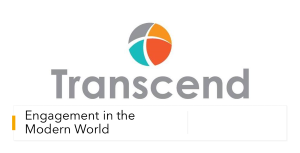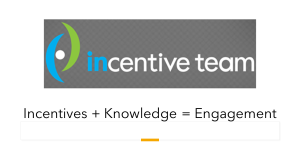A pioneer in connecting customer and employee engagement, Allan Steinmetz, Founder of Inward Strategic Consulting, prescribes a strategic and systematic approach to establishing a new normal within your organization.

Re-establishing normalcy, getting back to work, and ensuring productivity will not be easy. It will require a systemic, process-driven approach, much like a change management program.
Not since the Great Depression, have we experienced the number of unemployed people in the world. While people have been laid off, put on furlough, or received temporary reduced wages and pay cuts, they have been formulating opinions and attitudes regarding their current and former employers. Imagine and consider what your employees will say about the company when this is all finished. Do you want them to express appreciation and gratitude for how they were treated? Or will they tell people they were treated unfairly and dealt with poorly?
What is needed now is a repeatable, trainable, and coachable framework of change management and transparent communications that inspires employee engagement. Our colleagues at Inward have been working diligently to formulate a framework and process based on best practices and our 20 years of experience in this field.
Establishing a strong internal employee, purpose-driven brand narrative and positioning is imperative. Here is a seven-step framework from assessing readiness and identifying stages of preparedness to ultimately recognizing the heroes and strong contributors inside the organization when this pandemic is behind us.
1. Assessment and readiness, identification of the stages of crisis. This includes five sequential elements: forming a cross-company task force; measuring the current communication performance; assessing your readiness and ability to communicate; spokespeople identification and training, and a review of all internal media outlet and resources.
2. Message development. This step covers message/narrative architecture with an explanation of how it’s done, addressing the rumor mill and fears, WIIFM (what’s in it for me), developments of tone and manner, emotional and empathetic narratives, expectations and timelines, purpose driven “WHY” and brand values, designs to boost engagement and support performance.
3. Communication cascade and execution. Here, we discuss a structured plan and timetable for updates, systemic responses (that are calm, orderly, factual and transparent), cascading tactics from headquarters, to region, to division to office and department, spokespeople identification preparations (including FAQs), resource utilization and optimizations (using variety of tactics), and structured plan and timetables with updates.
4. Dialogue feedback communications loops - Feedback processes (surveys) and measurement to ensure employee dialogue, analysis of findings and real-time reporting, accountabilities and routine communications, process for regaining internal momentum with key audiences, maintaining management visibility, and modifying and adjusting messages/narratives.
5. Revisions while addressing concerns and presenting a new vision/purpose. This phase covers topics such as acknowledgment of feedback and suggestions with ways of improving communications, owning the message and being in the moment, solutions that demonstrate concerns and fears, recognition of the heroes within the organization for their selfless activities, adjusting expectations and providing flexibility, hope and transparency/show that you care, and finally providing clarity and clear expectations for the present situation and the future while reinforcing the core values and your brand purpose.
6. Getting back to business-the new normal. Creating the new message and narrative, addressing the obvious questions such as physical workspace benefits and compensation, talent recruitment, development and career growth, incentives and making up for lost time, monitoring of engagement scores, recruitment efforts and loyalty factors, and finally measuring employee understanding of the facts, emotions and fears.
7. Recognition and rewards. After completing the six previous sequential steps, there should be occasions to celebrate. How should a company identify people who made a difference by providing extraordinary performance for the community, their peers and the company, rewarding selflessness, making recognition and rewards of focal point of ongoing communications and spotlight it for special occasions?
The framework and processes are all about sequentially achieving effective change; acceptance; momentum of spirit; enthusiasm; and engagement among your past, present, and future employees of the company, so they all support you and become effective brand champions and ambassadors.
How you treat and communicate with your former and current employees now will have a great impact on your reputation and brand in the future. When your employees become the focal point in the center of everything, decision-making, actions, and recovery will take a different form.
For More Information
Allan Steinmetz
Tel. 617-308-3017
Master the Principles of Stakeholder Capitalism And Implementation Through Enterprise Engagement
Education, Certifications, and Information to Activate
Stakeholder Capitalism Available Nowhere Else
A complete learning, certification, and information program and a course syllabus for educators.
Training and Certification
Enterprise Engagement Alliance Education: Certified Engagement Practitioner; Advanced Engaged Practitioner, and Certified Engagement Solution Provider learning and certification programs on how to implement Stakeholder Capitalism principles at the tactical level.
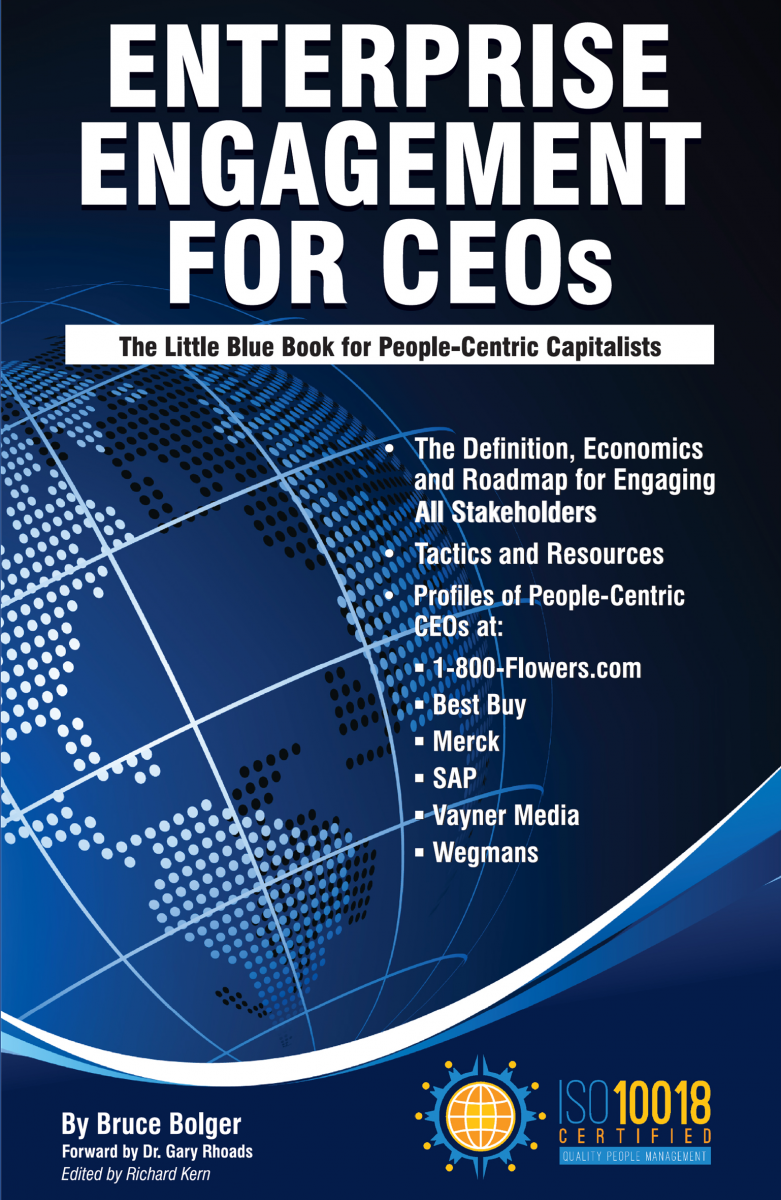
Join the EEA to begin your certification process or see our other resources below.
THE ONLY BOOKS ON STAKEHOLDER CAPITALISM IMPLEMENTATION
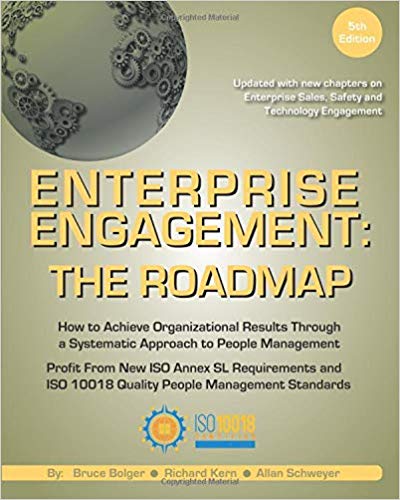
Enterprise Engagement: The Roadmap 5th Edition
The first and most comprehensive book on Enterprise Engagement and the new ISO 9001 and ISO 10018 quality people management standards. Includes 36 chapters detailing how to better integrate and align engagement efforts across the enterprise. (312 pages, $36.)
OTHER RESOURCES TO ACTUALIZE STAKEHOLDER CAPITALISM
Communities: The Enterprise Engagement Alliance and Advocate and the Brand Media Coalition free resource centers offering access to the latest research, news, and case studies; discounts, promotions, referrals, and commissions, when appropriate to third-party solution providers from participating coalition solution provider members.
Enterprise Engagement Resources: EEXAdvisors.com provides the only curated online marketplace to access hundreds of solution providers in all areas of human capital management and enterprise engagement throughout the world.
Online Overview:
10-minute short course: click here for a 10-minute introduction to Enterprise Engagement and ISO standards from the Coggno.com learning platform.
Services:
• The Engagement Agency at EngagementAgency.net, offering: complete support services for employers, solution providers, and technology firms seeking to profit from formal engagement practices for themselves or their clients, including Brand and Capability audits for solution providers to make sure their products and services are up to date.
• C-Suite Advisory Service—Education of boards, investors, and C-suite executives on the economics, framework, and implementation processes of Enterprise Engagement.
• Speakers Bureau—Select the right speaker on any aspect of engagement for your next event.
• Mergers and Acquisitions. The Engagement Agency’s Mergers and Acquisition group is aware of multiple companies seeking to purchase firms in the engagement field. Contact Michael Mazer in confidence if your company is potentially for sale at 303-320-3777.
Enterprise Engagement Benchmark Tools: The Enterprise Engagement Alliance offers three tools to help organizations profit from Engagement. Click here to access the tools.
• ROI of Engagement Calculator. Use this tool to determine the potential return-on-investment of an engagement strategy.
• EE Benchmark Indicator. Confidentially benchmark your organization’s Enterprise Engagement practices against organizations and best practices.
• Compare Your Company’s Level of Engagement. Quickly compare your organization’s level of engagement to those of others based on the same criteria as the EEA’s Engaged Company Stock Index.
• Gauge Your Personal Level of Engagement. This survey, donated by Horsepower, enables individuals to gauge their own personal levels of engagement.
For more information, contact Bruce Bolger at Bolger@TheEEA.org, 914-591-7600, ext. 230.












